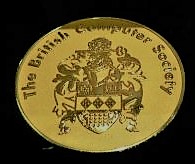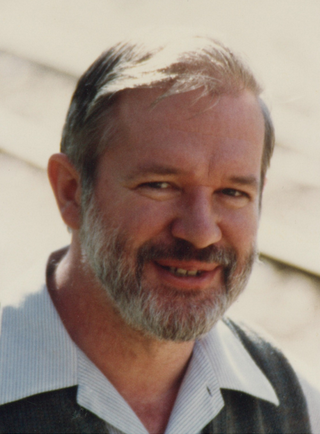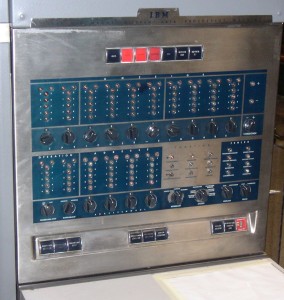Related Research Articles

The analytical engine was a proposed mechanical general-purpose computer designed by English mathematician and computer pioneer Charles Babbage. It was first described in 1837 as the successor to Babbage's difference engine, which was a design for a simpler mechanical calculator.

This article presents a detailed timeline of events in the history of computing software and hardware: from prehistory until 1949. For narratives explaining the overall developments, see History of computing.

Alan Jay Perlis was an American computer scientist and professor at Purdue University, Carnegie Mellon University and Yale University. He is best known for his pioneering work in programming languages and was the first recipient of the Turing Award.

Fernando José "Corby" Corbató was an American computer scientist, notable as a pioneer in the development of time-sharing operating systems.
Calvin Northrup Mooers, was an American computer scientist known for his work in information retrieval and for the programming language TRAC.

The Lovelace Medal was established by the British Computer Society in 1998, and is presented to individuals who have made outstanding contributions to the understanding or advancement of computing. It is the top award in computing in the UK. Awardees deliver the Lovelace Lecture.

Allan George Bromley was an Australian historian of computing who became a world authority on many aspects of early computing and was one of the most avid collectors of mechanical calculators.

Bernard A. Galler was an American mathematician and computer scientist at the University of Michigan who was involved in the development of large-scale operating systems and computer languages including the MAD programming language and the Michigan Terminal System operating system.
Professor Stanley J. Gill was a British computer scientist credited, along with Maurice Wilkes and David Wheeler, with the invention of the first computer subroutine.

Cuthbert Corwin Hurd was an American computer scientist and entrepreneur, who was instrumental in helping the International Business Machines Corporation develop its first general-purpose computers.
The IT History Society (ITHS) is an organization that supports the history and scholarship of information technology by encouraging, fostering, and facilitating archival and historical research. Formerly known as the Charles Babbage Foundation, it advises historians, promotes collaboration among academic organizations and museums, and assists IT corporations in preparing and archiving their histories for future studies.

Paul E. Ceruzzi is curator emeritus at the Smithsonian's National Air and Space Museum in Washington, D.C.
Tom Van Vleck is an American computer software engineer.
The American Federation of Information Processing Societies (AFIPS) was an umbrella organization of professional societies established on May 10, 1961, and dissolved in 1990. Its mission was to advance knowledge in the field of information science, and to represent its member societies in international forums.
Michael Sean Mahoney was a historian of science and technology.
Howard George Willis Ware, popularly known as Willis Howard Ware was an American computer pioneer who co-developed the IAS machine that laid down the blueprint of the modern day computer in the late 20th century. He was also a pioneer of privacy rights, social critic of technology policy, and a founder in the field of computer security.
The Digital Computer Association (DCA) was established in November 1952 in Santa Monica, California. It was disbanded in 1994.

Robert William Doran HFNZCS was a New Zealand-based computer scientist and historian of computing. He was Professor Emeritus of Computer Science at the University of Auckland, New Zealand.
Velma Elizabeth Huskey was a pioneer in early computing and author of several important papers on the history of computing.
Albert Smiley Hoagland had a long career on the development of hard disk drives (HDD) starting with the IBM RAMAC. From 1956 to 1984, he was with IBM in San Jose, California, and then, from 1984 to 2005, he was the director of the Institute for Information Storage Technology at Santa Clara University. He wrote the first book on Digital Magnetic Recording. Hoagland played a central role in the preservation and restoration of the IBM RAMAC now displayed at the Computer History Museum, Mountain View, California. He died in Portland, Oregon, on 1st October 2022.
References
- ↑ "Norberg, Arthur L. (Arthur Lawrence), 1938-". Social Networks and Archival Context. Retrieved 2020-01-19.
- ↑ "Arthur L. Norberg". History of Science, Technology, and Medicine. 2015-10-16. Retrieved 2020-01-19.
- ↑ Aspray, William (October–December 2007). "Leadership in Computing History: Arthur Norberg and the Charles Babbage Institute". IEEE Annals of the History of Computing. 29: 16–26. doi:10.1109/mahc.2007.61. S2CID 38199602.
- ↑ Misa, Thomas J. (October–December 2007). "Guest Editors' Introduction: New Directions in the History of Computing". IEEE Annals of the History of Computing. 29: 6–7. doi:10.1109/mahc.2007.59.